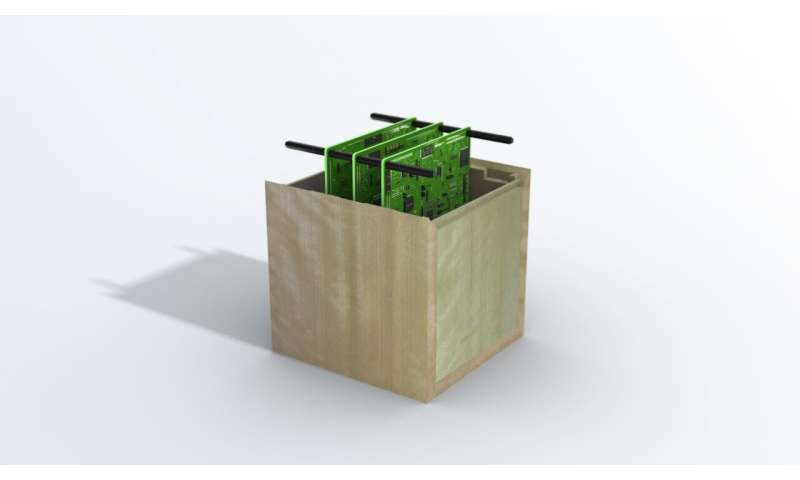Japanese pairing looking into using wood to build satellites

Japanese company Sumitomo Forestry has announced a joint development project with Kyoto University to test the idea of using wood as a component in satellite construction. As part of the announcement, officials with Sumitomo Forestry told reporters that work on the project will begin with experiments designed to test different types of wood in extreme environments.
Some of the major components in most satellites include aluminum, Kevlar and aluminum alloys, which are able to withstand both temperature extremes and constant bombardment by radiation—all in a vacuum. Unfortunately, these characteristics also allow satellites to remain in orbit long after their usefulness has ended, resulting in constant additions to the space junk orbiting the planet.
According to the World Economic Forum, there are currently approximately 6,000 satellites circling the Earth but only 60% of them are still in use. Some in the field have predicted that nearly 1,000 satellites will be launched into space each year over the coming decade. Considering their lifespan, this suggests there could be thousands more dead satellites orbiting the planet in the coming years.
This space debris poses a significant threat to other satellites (they all travel thousands of miles per hour) and also to manned space missions. Most in the space community agree that space junk is becoming a serious problem. And there is more bad news—the aluminum used in satellites has been found to break apart when a satellite returns to Earth, creating hundreds or thousands of tiny alumina particles that wind up floating in the upper atmosphere for many years, possibly posing an environmental problem. For all these reasons, the researchers with this new project are looking to replace these materials with wood.
The major benefit of wood-based satellites is they would burn up completely when returning to Earth. But another major bonus of using wood to create the outer shell of a satellite is that electromagnetic waves would pass right through it, which means antennas could be placed inside of satellite structures, making them simpler to design and deploy. The researchers plan to look for appropriate wood candidates and then to conduct experiments to see it they could be treated to stand up to space conditions. They predict they will have a product ready for testing by 2023.
No comments:
Post a Comment